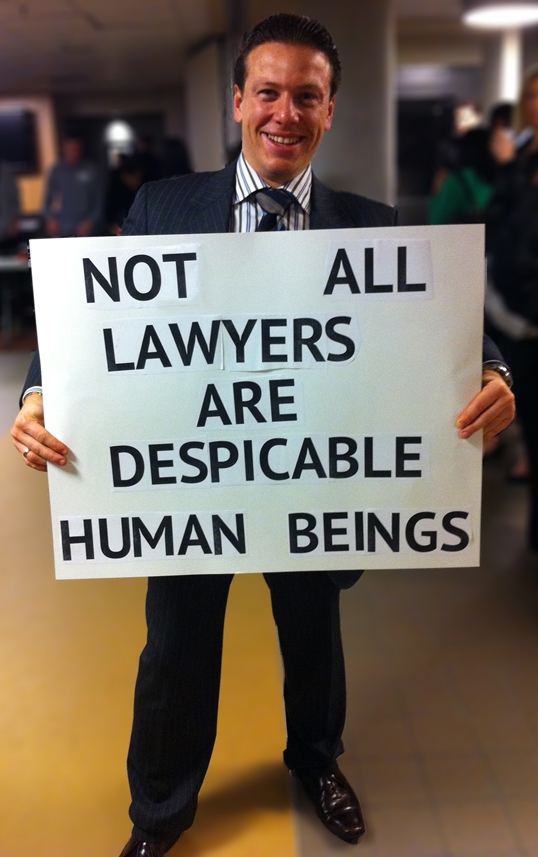Blog
I've been asked several times what Mincov Law Corporation's logo stands for.
In fact, it is more than just randomly grouped triangles.
Here, combined are three ideas.

Letter 'A' for 'Andrei'

Letter 'M' for 'Mincov'

Here's the famous puzzle where one is offered to connect 9 dots with 4 straight lines. The only way to do it is to go outside the box represented by the 9 dots. The quest for outside-the-box legal solutions is what distinguishes Mincov Law Corporation from many other law firms.
Most people will agree that today's copyright laws make no sense. Many of them would have a hard time explaining why. Here is my take on it.
1. If the only purpose of copyright laws is to create minimal conditions under which talented people are not going to refuse to create, then our copyright laws provide WAY TOO MANY unnecessary rights to copyright owners.
2. If, on the other hand, copyright laws are to protect the vulnerable party that, in absence of such laws, would be unable to sell the results of their work on their terms, then our copyright laws provide WAY TOO MANY “user” exceptions.
3. The worst thing about our laws is that they are expressly attempting to create a balance between the interests of copyright owners and users. Same as creating a balance of interests between rapists and their victims.
4. Before any meaningful debate about modernization of copyright laws can happen, there must be a debate on the foundational level as to WHY we have copyright laws at all.
| Categories: | Intellectual Property: | CopyrightIntellectual Property |
| Values: | Individual RightsPassion | |
| Additional Tags: | PhilosophyFair Dealing | |
In my post Perception of the Law, I wrote that for most clients, the law is seldom anything more than a matter of risk management.
The first thing that comes to mind when one hears about risk management is, of course, insurance.
Some time ago I met with David W. Hamilton, the president of Front Row Insurance Brokers, a company that arranges insurance for feature films, TV, documentaries, commercials, new media, fairs and festivals, museums and art dealers, musicians, tour liability, recording studios - you name it.
I invited David to share some information about what his firm does, and this is what we came up with.
So if a company wants to get insurance against risks relating to infringement of IP, what kind of insurance policy would it be?
This is what is called Errors and Omissions Insurance. It covers legal liability and defense for the production company against lawsuits alleging unauthorized use of titles, formats, ideas, characters, plots, plagiarism, unfair competition or privacy, breach of contract.
It also protects against alleged libel, slander, defamation of character or invasion of privacy. This coverage will usually be required by a distributor, broadcaster or financier prior to the release of any theatrical or television production. Production financing will usually not flow until E&O coverage is in force.
What is involved with getting the E&O Insurance for a film?
1. Applicant and its counsel should continually monitor the production at all stages, from inception through final cut, with a view to eliminating material which could give rise to a claim.
2. The script should be read prior to commencement of production to eliminate matter which is defamatory, invades privacy or is otherwise potentially actionable.
3. Unless the work is an unpublished original not based on any other work, a copyright report must be obtained. Both domestic and foreign copyrights and renewal rights should be checked. If a completed film is being acquired, a similar review should be made of copyright and renewals on any copyrighted underlying property.
4. If the script is an unpublished original, the origins of the work should be ascertained - basic idea, sequence of events and characters. It should be ascertained if submissions of any similar properties have been received by the applicant and, if so, the circumstances as to why the submitting party may not claim theft or infringement should be described in detail.
5. Prior to final title selection, a Title Report must be obtained.
6. Whether Production is fictional or factual, it should be made certain that no names, faces or likenesses of any recognizable living persons are used unless written releases have been obtained. Release is unnecessary if person is part of a crowd scene or shown in a fleeting background. Telephone books or other sources should be checked when necessary. Releases can only be dispensed with if the Applicant provides the company with specific reasons, in writing, as to why such releases are unnecessary and such reasons are accepted by the Company. The term “living persons” includes thinly disguised versions of living persons or living persons who are readily identifiable because of other characters or because of the factual, historical or geographic setting.
7. All releases must give the applicant the right to edit, modify, add to and/or delete material, juxtapose any part of the film with any other film, change the sequence of events or of any questions posed and/or answers, fictionalize persons or events including the release and to make any other changes in the film that the applicant deems appropriate. If the person is a minor, consent has to be legally binding.
8. If music is used, the applicant must obtain all necessary synchronization and performance licenses from composers or copyright proprietors. Licenses must also be obtained on prerecorded music.
9. Written agreements must exist between the applicant and creators, authors, writers, performers and any other persons providing material (including quotations from copyrighted works) or on-screen services.
10. Whether the production is factual or fictional, if distinctive locations, buildings, businesses, personal property or products are filmed, written releases must be secured. This is not necessary if non-distinctive background use is made of real property.
11. If the Production involves actual events, it should be ascertained that the author’s sources are independent and primary (contemporaneous newspaper reports, court transcripts, interviews with witnesses, etc.) and not secondary (another author’s copyrighted work, autobiographies, copyrighted magazine articles, etc.).
12. If the Production involves actual events, it should be ascertained that the author’s sources are independent and primary (contemporaneous newspaper reports, court transcripts, interviews with witnesses, etc.) and not secondary (another author’s copyrighted work, autobiographies, copyrighted magazine articles, etc.).
13. Shooting script and rough cuts should be checked, if possible, to assure compliance with all of the above. During photography, persons might be photographed on location dialogue added or other matter included which was not originally contemplated.
14. If the intent is to use the Production on Videotapes, Videocassettes, Videodiscs or other technology, rights to manufacture, distribute and release the Production must be obtained, including the above rights, from all writers, directors, actors, musicians, composers and others, connected to the work, including proprietors of underlying materials.
15. Film Clips should not be used unless licenses and authorizations for the second use are obtained from the owner of the clip or party authorized to license the same, as well as licenses from all persons rendering services in or supplying material contained in the film clip; e.g., underlying literary rights, performances of actors or musicians. Special attention should be paid to music rights as publishers are taking the position that new synchronization and performance licenses are required.
16. In addition, dead persons (through their personal representatives or heirs) have a “right of publicity”, especially where there is considerable fictionalization. Clearances must be obtained where necessary. Where the work is fictional in whole or in part, the names of all characters must be fictional. If for some special reason particular names need not be fictional, full details must be provided to the Company in an attachment to the Application.
17. Consideration should be given to the likelihood of any claim or litigation. Is there a potential claimant portrayed in the Production who has sued before or is likely to sue again? Is the subject matter of the Production such as to require difficult and extensive discovery in the event of necessity to defend? Are sources reliable? The above factors should be considered in your clearance procedures and recommendations.
How much does the E&O insurance cost?
Premiums for E&O vary based on the content of the production. Every project is unique and requires a unique, custom E&O policy.
To give some idea about the cost of a typical policy: industry standard three year policy for a straightforward documentary would cost $3,000 to $4,000, while a similar policy for a feature film would normally cost $5,500 to $7,000.
Does insurance eliminate the need for lawyers?
Not really. To get insurance, you would need to have your lawyer review clearances, which means your lawyer will need to sign a document declaring that all important IP-related issues have been dealt with. Insurance companies also have their lawyers clear the application.
Insurance is not a "get out of jail free" card. It is meant to provide protection if something unexpected happens, not to back up a sloppy or, worse even, rogue business.
Unless you are serious about getting your legal work done properly, no insurance company is going to do it for you.
Many new entrepreneurs dismiss the importance of having a sound IP strategy from the very start. The usual excuse is, “I’ll make sure my business starts making real money and then I’ll deal with this law stuff.”
I call it a lose-lose scenario. The two alternatives are: (1) the business never makes it; or (2) the business becomes successful, but immediately it finds itself defenseless against all those who want a free ride on its success.
Think about Coca-Cola – would they be where they are today if they decided to wait until they sold a few hundred thousand bottles before they figured out how to protect their most important assets - their know-how and trademarks?
If your business involves creation, use or licensing out of content and you do not have a meaningful IP strategy, then you are not being serious about your business.
Just got back from Networking With Purpose event tonight.
Many great speakers. A lot of great guests. I had a brief presentation, too.
This time, I had more than just business cards with me...

Categories:
Intellectual Property:Trademarks
Intellectual Property
Copyright
IP Strategy
TMF Cartoons
New Article
Patents
Domain Names
Internet
Values:
Passion
Integrity
Innovation
Decency
Efficiency
Freedom
Individual Rights
Website Updates:
Website Updates
More Cases Uploaded
New Feature
Tags:
CollectivismPhilosophySmall BusinessNew Copyright ActFair DealingArchive:
March 2016October 2015
September 2015
July 2015
March 2015
August 2015
June 2015
May 2015
April 2015
February 2015
January 2015
December 2014
November 2014
October 2014
August 2014
May 2014
April 2014
March 2014
February 2014
December 2013
November 2013
October 2013
September 2013
August 2013
July 2013
June 2013
May 2013
April 2013
March 2013
February 2013
January 2013
December 2012
November 2012
October 2012
September 2012
August 2012
July 2012
June 2012
May 2012
April 2012
March 2012
February 2012
January 2012
December 2011
